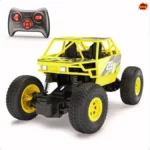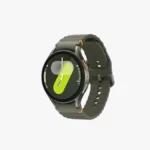Some time ago, a video of a skateboarder surfaced on Reddit and the skateboarder was cruising around a London Skatepark. The video became quite popular on social media. Skateboarding is in itself pretty cool but what stuck out most was stable the whole footage was without any shakiness coverage, Well, the secret to such a stable video turned out to be a pretty neat accessory named gimbal stabilizer and it isn’t some black magic.
What is a Gimbal:
A gimbal is a tool that uses motors and intelligent sensors to support and stabilize a camera
which means you can film smooth video footage and you can do it while on the move, pretty cool right?
So let’s dive deep into this cool camera gimbal.
How does a camera Gimbal work?
If we have to see in the past, Hollywood film producers typically employed expensive Dollys or Steadicams and which use physical moving parts to keep it steady these tools are not the ones that are computer-assisted, so they require the operator to be highly skilled to use them,
Gimbals, on the other hand, are more recent ‘digital ‘ miniature stabilizers, and they can be said to have little brain uses sophisticated motion-detecting abilities which are essentially required to differentiate between the videographer’s intentional movements and the unwanted camera shakes which I am pretty sure nobody wants it in their video.
Let’s take your phone as an example for a minute. It most likely has accelerometers and gyroscopes that are built-in enabling it to sense when you have flipped the screen or lifted it off the table.
A gimbal also has all the sensing capabilities along with some moving pivots and a camera mount. You can utilize these quiet brushless motors that make micro-adjustments to the arms, the mounted camera can be completely steady and just like when you lift and move a chicken around, a mobile gimbal is also just like that.
2-axis vs 3 axis gimbal:
Most of the Gimbals will either be 2-axis or 3-axis Gimbals and you can probably guess that a 3-axis Gimbal is superior. But you must keep in mind that 3 axis Gimbal is expensive and the difference that the extra pivot makes might not be enough to warrant the extra cost.
A 2-axis Gimbal, on the other hand, corrects a camera that is pitching forward and back or rolling from side to side. It will not correct unwanted movements in the yaw axis Whereas a 3-axis Gimbal will correct the correct unwanted shake in the yaw axis and this will result in even more stable footage.
While you are recording video it is quite understood that you have quite the ability to reduce camera shake and especially in one axis, So a 2-axis Gimbal is adequate for such purposes.
However, a 3-axis Gimbal has its downsides it has an extra pivot and which means it weighs more and this is especially downside in case you want to use it with a camera drone and where there is a heavier load and it can reduce the drone’s flight time. A 3-axis Gimbal also has an extra motor. This feature of having an extra motor means more battery consumption and hence there is shorter battery life.
The science behind Gimbals:
Any physical object can rotate in 3 dimensions which are pitch, yaw, and roll and if you know how to adjust camera tripods then you will probably experience making adjustments in all three axes to get the perfectly lined up shot.
A shaking camera will have randomly unwanted movements in all the 3 axes. But it is possible to counteract those movements by producing movements in opposite directions, and essentially we have to do the exact opposite pitch, yaw, and roll movements, and there you have your perfect shot.
When it comes to a motorized gimbal,’ inertial measurement units IMUs (a fancy way of saying motion and rotation sensors) immediately send movement data to a computer and which calculates how much countermovement is needed in each axis.
Of course, there is a chance of the cameraman tilting the camera deliberately, in that case, the computer uses advanced heuristic algorithms that are capable of telling when the movement was deliberate or not. It is a pretty neat way of maintaining stability while shooting any shot.
How to use Gimbal as a Gimbal stabilizer to stabilize a video:
When it comes to using a Gimbal, is pretty easy to use. Once it is set up, it alone does all the hard work of stabilizing for you, So, the only difficult part is to find something to film. However, in the beginning, there will be some complications and before that, you need to choose the right Gimbal for your camera. If you are an iPhone or GoPro User, a small handheld Gimbal can be suitable to use.iPhone Gimbals typically also use GoPros and this is because of the adjustable clamps, although a GoPro Gimbal will have more compatibility.
If you want to use a gimbal for DSLR or Video Camera on the other hand, in that case, you need a much bigger one and this bigger Gimbal will, of course, cost you a lot more. So it is expensive to purchase.
Once you get your hands on the Gimbal then you will have to follow the instructions to attach it to your iPhone/GoPro/DSLR/Video Camera and after that, you will be pretty much ready to shoot with your Gimbal. You have to be aware that the Gimbal is designed only to cancel out those small movements, and not bigger ones. For example, if you are climbing the stairs and the entire camera will be moving up and down and if you don’t want that, you will still need to purposefully keep the camera moving upwards in a smooth line.
Conclusion:
Gimbal is a Cool accessory for your camera and all photographers must get their hands on it to click some amazing footage even budding photographers can try their hands on the Gimbal. Hope the article provided you with all the information you needed about Gimbal.

















